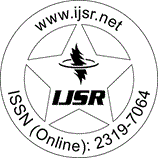Downloads: 1
India | Homeopathy | Volume 14 Issue 10, October 2025 | Pages: 387 - 389
Erysipelas (Saint Anthony's Fire): A Homoeopathic Approach
Abstract: Historically shrouded in superstition and dread, "Saint Anthony's Fire" is now identified as erysipelas-a streptococcal skin infection characterized by its intense redness and burning inflammation. Beyond its medical description, the condition holds deeper philosophical significance within homoeopathy, where it represents an outward manifestation of internal imbalance. Thinkers such as Hahnemann and Stuart Close viewed disease not as a mere physical lesion but as a dynamic disturbance of the vital force, with symptoms serving as its expressive language. From this standpoint, the fiery skin and systemic agitation of erysipelas are interpreted as the organism's vital attempt to restore harmony rather than a process to be suppressed. Remedies like Belladonna, Apis mellifica, Rhus toxicodendron, Cantharis, Lachesis, and Arsenicum album are selected not solely for their physiological effects but for their resonance with this inner energetic pattern. This perspective calls upon the physician to assist, rather than obstruct, the healing process-integrating hygienic and conventional measures while preserving respect for the body's self-regulating intelligence. Ultimately, the homoeopathic understanding of "Saint Anthony's Fire" unites symbolism, science, and compassion, emphasizing that true cure lies not only in eliminating infection but in reestablishing the natural rhythm and vitality of life itself.
Keywords: Saint Anthony's Fire, erysipelas, homoeopathy, vital force, dynamic healing
How to Cite?: Leena Samnani, "Erysipelas (Saint Anthony's Fire): A Homoeopathic Approach", Volume 14 Issue 10, October 2025, International Journal of Science and Research (IJSR), Pages: 387-389, https://www.ijsr.net/getabstract.php?paperid=SR251006151428, DOI: https://dx.doi.org/10.21275/SR251006151428
